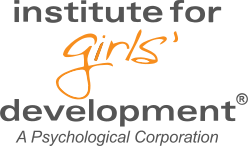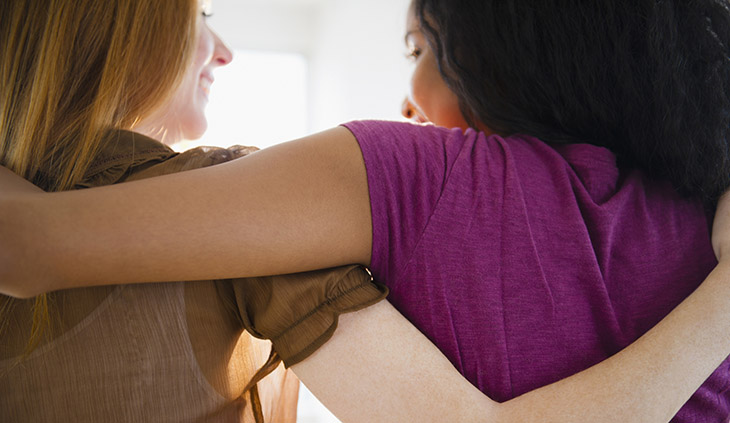When I first came out as a lesbian I got a call from dear friends. They were devasted – a lesbian couple close to them had just been shot and killed in their home. For being gay. The complexity of feelings – sadness, compassion, anger, fear, shock and more – swirled inside and overwhelmed me. Different today are the frequency of mass shootings and the enormous increase in very public hate rhetoric. We’re all dealing with some level of collective and cumulative trauma as a result. Research supports this, showing that Americans are feeling the trauma of unnecessary violence and hate. These are the backdrops of our lives, until they are the forefront – as was the case this weekend for those directly and indirectly impacted by the hateful Club Q shooting. For those who are part of targeted communities in particular, the persistent minority stress is enormous. Right now the voices of the LGBTQ youth I listen to share how scared they are, how unsafe the world feels to them even in the safe spaces. The American Psychological Association states this about the current public health crisis of hate and gun violence.
“For children and teens, whose mental health is already in crisis, the ongoing backdrop of violence is steadily eroding the sense of well-being, safety, and efficacy known to be essential for healthy development. See comments from APA’s president on the urgent need to eliminate hateful rhetoric and strengthen gun laws…”
From parents and caregivers, I often hear questions about how to talk with children and teens about mass shootings, hate rhetoric and crimes. I also hear questions about how to support LGBTQ youth. I’m providing today a starter kit of conversation considerations. If you’d like to take a deeper dive, you may want to look at the tips provided by Children’s Hospital of Philadelphia as well as explore the websites provided at the end of this article. https://www.chop.edu/news/health-tip/talking-to-kids-about-gender-and-sexual-orientation
- Start the conversation. Don’t wait for your children to bring up the topics of sexual orientation, gender identity, hate crimes, and/or mass shootings. By initiating the conversation, you signal openness to listening and dialoguing. Meet your children where they are. Think about your child’s age, personality, development and identity. Listening to what they already know and how they are feeling is a good place to start. Depending on their age, personality and identities, they may benefit from age-appropriate information or reassurance. Or, they may want to talk about what they can do to make a difference. Supporting them in taking action individually or as a family can be healing, empowering and an antidote to current fear and trauma. Name and validate feelings. Dr. Alec Miller, a child psychologist with New York’s Montefiore Medical Center/Albert Einstein College of Medicine shares, “You want to encourage kids to talk about what’s upsetting them about the situation, to get some of the emotion off their chest.” Once they’ve shared, validate the feelings – normal responses to repeated horrible, scary, sad events. You can share that you are feeling some of those same emotions. If your child is having trouble naming their feelings, you can help by providing some words. Keep the conversations going. There are limitless opportunities today to stay in conversation – spring boarding from both tragic and positive current events, acknowledging the contributions of public figures, and noting days of recognition and pride. For example, as you may know, Sunday, November 20, was Transgender Day of Remembrance – a time to remember and honor transgender people from around the world whose lives have been lost to anti-trans violence.
- Lean in with love. Bringing a heart of empathy and compassion to the conversation signals to your child that you will seek to create a space of safety for dialogue. It’s vital to communicate to children and teens that they will be loved by you, no matter who they are. Children’s Hospital of Philadelphia notes, “One of the biggest fears we hear from youth is that their parents and important adults in their lives will stop loving them because they are “different.” Kids are very sensitive to a lack of support – wherever it comes from. As parents, we can be a buffer to negative talk and prevent long-term negative health outcomes.” While there are many potential negative outcomes to hate, rejection and discrimination, the statistic on the rate of suicide attempts by LGBTQ youth who have experienced family rejection is tragic. In a recent study, “youth who experienced highly rejecting behaviors were eight times more likely to attempt suicide than those who experienced love and acceptance from their parents and caregivers.” To can learn more about this study from the Family Acceptance Project of San Francisco State University: https://familyproject.sfsu.edu/ Eliza Byard is the executive director of GLSEN, a nonprofit dedicated to developing LGBTQ inclusive schools. She emphasizes, “For every parent in the United States right now we have an incredibly important job to do and that job is to demonstrate to every single child that there is love and care and connection for every child, no matter who they are.”
- Find positive stories. You may be familiar with this quote from Mister Rogers: “When I was a boy and I would see scary things in the news, my mother would say to me ‘Look for the helpers. You will always find people who are helping.'” Indeed, look for the helpers! Shine the light on them. Some examples after the Club Q mass shooting include Richard Fierro and Thomas James who tackled and disabled the gunman; the hundreds of people waiting in line to give blood; the businesses that provided food and drinks for those waiting in line; the vigils, tributes and memorials.
- Get help if needed. Inspired by the wise words of colleague Dr. Catherine Steiner-Adair, psychologist, I often find myself repeating, “Don’t worry alone.” Such good advice for all of us right now. If you think you or your child would benefit from talking to a professional, don’t hesitate to reach out. Here are some tips for finding a therapist.
Additional National Resources that provide support to the LGBTQIA+ community.
- Trevor Project: 24/7 year-round crisis intervention and suicide prevention services to lesbian, gay, bisexual, transgender and questioning (LGBTQ) young people ages 13-24. Call 1-866-488-7386 or Text 678-678.
- PFLAG: 400+ chapters across the country providing confidential peer support, education, and advocacy to LGBTQ+ people, their parents and families, and allies.
- Crisis Text Line: Free, 24/7 support for those in crisis. Text from anywhere in the U.S. to connect with a trained Crisis Counselor. Text START to 741-741
- The Gay, Lesbian, Bisexual and Transgender National Hotline: 1-888-843-4564
- The GLBT National Youth Talkline: Youth serving youth through age 25 – 1-800-246-7743.
- Trans Lifeline: 1-877-565-8860
- GLAAD: Media institute that equips and empowers advocates and storytellers to strengthen their media impact and accelerate acceptance for the LGBTQ community.
- The Center: The Lesbian, Gay, Bisexual & Transgender Community Center

